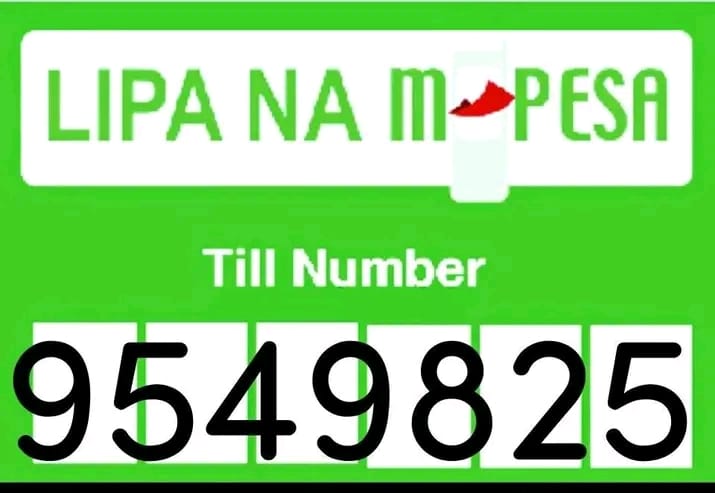
simply amazing, always for you.
Life has a funny way of throwing curveballs when you least expect them. One day, everything’s fine. The next, your car breaks down, your dog swallows a sock, or your boss decides your services are no longer needed. In moments like these, having an emergency fund is the financial lifeline that can save you from going into panic mode—or worse, going into debt.

If you’ve ever felt overwhelmed about where to start with saving for unexpected expenses, you’re not alone. Building an emergency fund doesn’t have to be complicated. In fact, it’s one of the simplest and most powerful ways to take control of your financial life.
This guide will walk you through exactly how to set up an emergency fund that’s practical, sustainable, and tailored to your life. Let’s break it all down.
What Is an Emergency Fund and Why Do You Need One?
An emergency fund is money you set aside to cover life’s unplanned events. Think of it as your financial safety net. It’s there when you face sudden medical bills, lose your job, deal with unexpected travel costs, or have to pay for a critical home or car repair.
But why do you really need it?
Here’s why:
- Peace of mind: Knowing you have cash available can relieve a huge amount of stress.
- Avoid debt: Emergency funds keep you from relying on credit cards or payday loans.
- Financial resilience: You can handle the unexpected without derailing your long-term goals.
An emergency fund is not a luxury—it’s a necessity for financial stability.
Step 1: Set a Realistic Emergency Fund Goal
When starting out, most people wonder, “How much should I save?”
The short answer: It depends on your lifestyle, income stability, and monthly obligations. But here are some useful benchmarks to guide you:

Tiered Goals to Work With:
- Starter Goal: $500 to $1,000
Great for people just beginning their savings journey. This covers small emergencies like car repairs or medical co-pays. - Intermediate Goal: 1 to 3 months of expenses
Suitable for people with stable income but few financial resources. - Long-Term Goal: 3 to 6 months of expenses (or more)
Ideal if you’re self-employed, supporting a family, or in a high-cost area. This buffer can carry you through job loss or health issues without panic.
Let’s say your essential monthly expenses are $2,000. A fully-funded emergency fund would range from $6,000 to $12,000.
Step 2: Calculate Your Monthly Essentials
To know how much to save, you need to understand your cost of living. Start by listing your non-negotiable monthly expenses:
- Rent or mortgage
- Utilities (electricity, water, gas)
- Groceries
- Transportation (gas, car payments, transit)
- Insurance premiums
- Minimum loan payments
- Childcare or education expenses
Leave out dining out, streaming services, or shopping sprees. Your emergency fund is meant to keep you afloat, not maintain a lavish lifestyle.
Once you total up the essential expenses, multiply by 3–6. That’s your target number.
Example:
- Monthly essentials = $2,500
- 3 months’ coverage = $7,500
- 6 months’ coverage = $15,000
If that feels like a lot, don’t panic—remember, you’re building this gradually.
Step 3: Pick the Right Account for Your Emergency Fund
Where you keep your emergency fund matters more than you think. It needs to be:
- Safe (not subject to market volatility)
- Accessible (you can get the money fast when you need it)
- Separate (so you’re not tempted to spend it)
Best Places to Keep Your Emergency Fund:
- High-Yield Savings Account (HYSA)
These accounts offer higher interest than traditional savings accounts and are easily accessible online. Many let you transfer money quickly to your checking account. - Money Market Account
A solid alternative to HYSAs, with slightly better returns and similar liquidity. - Cash Reserve at a Credit Union
Some credit unions offer competitive rates and easy access with personalized service.
Avoid:
- Investment accounts: Stock market fluctuations can wipe out your savings overnight.
- Regular checking account: Too easy to dip into.
- Cash under the mattress: Not safe, and doesn’t earn any interest.
Step 4: Make Saving Automatic
Consistency beats intensity. One of the most effective ways to build your emergency fund is to set it and forget it.
Here’s how:
- Set up automatic transfers from your checking account to your emergency fund.
- Choose a schedule that works: weekly, biweekly, or monthly.
- Start small—$25 or $50 at a time adds up.
By automating your savings, you remove the temptation to spend that money elsewhere and make progress without thinking about it.
Step 5: Use Windfalls and Extra Income
When unexpected income comes your way, use it to boost your emergency fund.
Examples of windfalls:
- Tax refunds
- Work bonuses
- Side hustle profits
- Birthday or holiday cash gifts
- Rebates or cash back
Instead of blowing that money on a splurge, route it into your emergency savings. You won’t miss it—and your future self will thank you.
Step 6: Cut Spending to Speed Things Up
Let’s face it—saving isn’t always exciting, especially when it feels like there’s not much left at the end of the month. But even small lifestyle adjustments can free up more money to save.
Here are some quick wins:
- Cancel unused subscriptions or memberships
- Cook at home instead of dining out
- Delay non-essential purchases
- Downsize unnecessary services (e.g., switch to a cheaper phone plan)
- Use coupons and cashback apps
Redirect those savings directly into your emergency fund.
Step 7: Keep It Sacred—Only for Real Emergencies
An emergency fund only works if you actually use it for emergencies.
True Emergencies:
- Job loss or furlough
- Unexpected medical bills
- Major car repairs
- Emergency travel (funeral, serious illness)
- Home repair (leaking roof, broken furnace)
Not Emergencies:
- Concert tickets
- Buying gifts
- Shopping sales
- Upgrading your phone
- Going on vacation
Be strict about this rule. Treat your emergency fund like insurance—it’s only there when you absolutely need it.
Step 8: Replenish After Use
If you tap into your emergency fund, make it your top priority to refill it. Go back to your automatic transfers or put future windfalls toward rebuilding the cushion.
Using your emergency fund isn’t a failure—it means it’s doing its job. But don’t let a temporary dip become a permanent drain.
Step 9: Review and Adjust Annually
Your emergency fund is not a one-and-done deal. As your life changes, your fund should grow with it.
Reevaluate when:
- You get a raise or lose income
- You move to a higher or lower cost of living area
- You take on new dependents (like a baby or aging parent)
- You pay off a major debt
Recalculate your monthly essentials and adjust your savings goal accordingly. Keeping your emergency fund aligned with your life keeps you protected.
Step 10: Celebrate Your Progress
This might sound corny, but saving money is a big deal. Every dollar you put into your emergency fund is a small victory.
Here’s why:
- You’re taking control of your financial future.
- You’re building habits that compound over time.
- You’re reducing financial anxiety in a world full of uncertainty.
Celebrate the milestones—$100, $500, $1,000, one month of expenses. Each step means you’re more prepared for whatever life throws your way.
Emergency Funds Are for Everyone
You don’t have to be rich to start an emergency fund. In fact, having one is how many people stay financially stable even when the unexpected happens.
Yes, it might take time. Yes, it will require some discipline. But the peace of mind that comes from knowing you’re ready for life’s “what ifs” is priceless.
Start today with what you can. Even if it’s just $5, you’re building a habit that will serve you for life.

Support Our Website!
We appreciate your visit and hope you find our content valuable. If you’d like to support us further, please consider contributing through the TILL NUMBER: 9549825. Your support helps us keep delivering great content!
If you’d like to support Nabado from outside Kenya, we invite you to send your contributions through trusted third-party services such as Remitly, SendWave, or WorldRemit. These platforms are reliable and convenient for international money transfers.
Please use the following details when sending your support:
Phone Number: +254701838999
Recipient Name: Peterson Getuma Okemwa
We sincerely appreciate your generosity and support. Thank you for being part of this journey!
